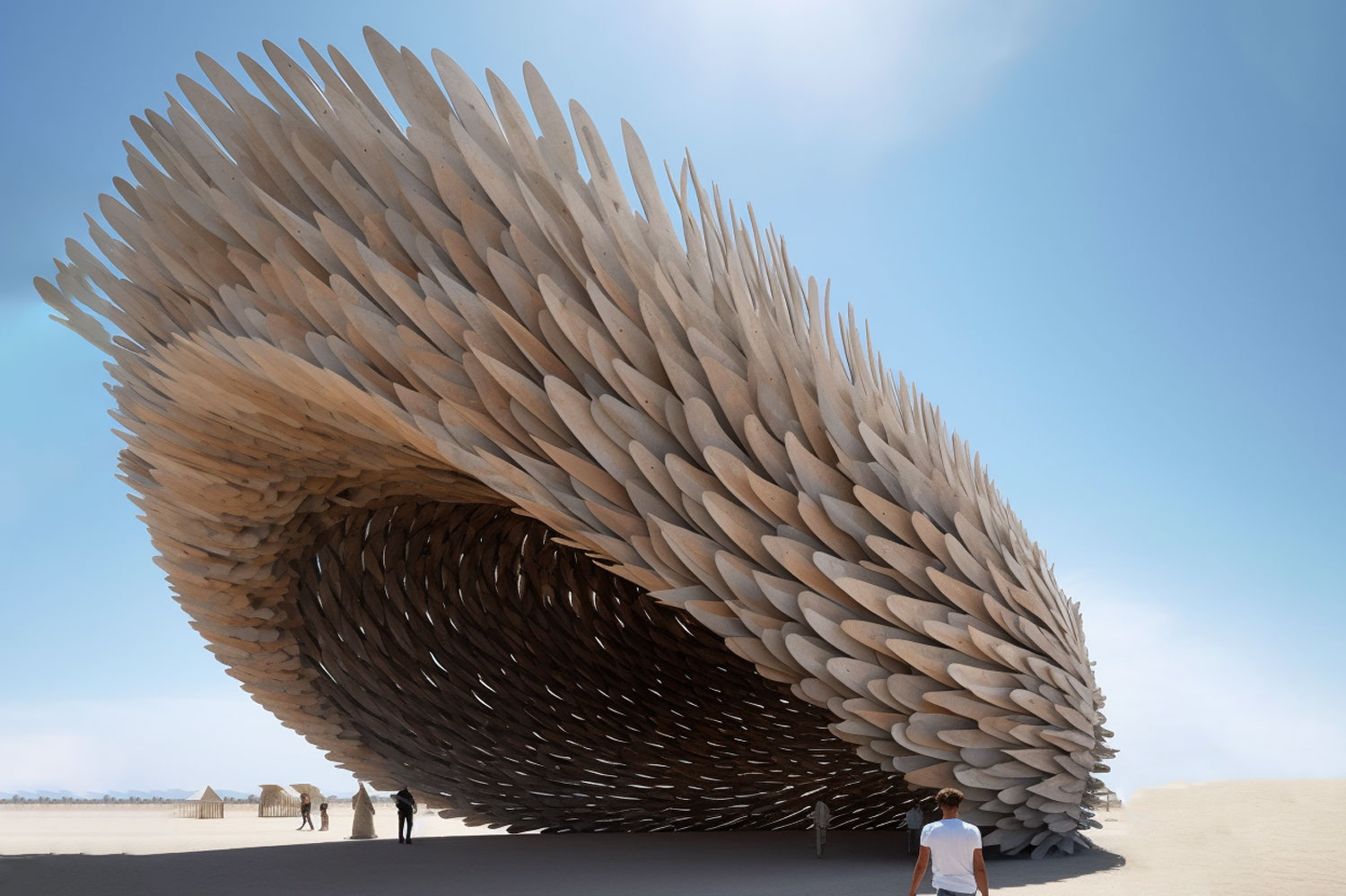
José Luis Pérez Hermo was actively participating in Midjourney Architecture 3.0 and Midjourney Design workshops, led by Tim Fu, helping him to push the boundaries when it comes to the ideation process. From then onwards, He is trying to experiment with varied AI tools, starting from the concept through the detailing stage. The “Natura Nova” project embraces ecological sustainability, incorporating traditional techniques in novel ways. It highlights self-supplying materials and local vernacular Bali architecture, which provides a natural settlement when it comes to inner human being fulfillment. Natura Nova reinterprets the traditional Resort concept, guiding guests towards a communal experience. It combines the advantages of natural surroundings with a rich sense of unity.

According to José Luis Pérez Hermo, guiding MidJourney towards a clear, initial concept was a challenging task. He began by visualizing a sustainable, bamboo-made structure nesting within the environment. At this stage of the project, careful image curation is crucial to prevent the AI from taking excessive liberties that could result in non-buildable architectural designs.
The next step involved establishing a visual narrative coherence. As Tim Fu explained, this is an iterative process. He started with the exteriors, keeping in mind that iterating earlier images would be necessary once he delved into the interiors. That was the hardest part, steering the software to keep a holistic approach. The aim was to ensure consistency across all spaces in the project, leaving no room for doubt that we are working on the same project.
As a computational designer, the AI realm is not a new concept. José Luis Pérez Hermo found these tools beneficial throughout the entire design process, from topology optimization to energy analysis. However, text-2-image software opens up new horizons because it gives us the possibility to explore hundreds of concepts for our projects within a short amount of time.
During those Parametric-Architecture workshops, Tim Fu provides tools to understand prompt engineers accurately. Some useful advice was adding one word at a time and even repositioning ii within the prompt to enhance the software´s comprehension. This approach was essential to provide an accurate level of consistency (interior/exterior) on the projects.


José Luis Pérez Hermo has been using Dall-e-2 for quite a long time. However, he came across Adobe Firefly, which offered him the opportunity to test it as a Beta user, and the experience was fantastic. Once he heard it would be seamlessly integrated with other Adobe software, he kept using it as a reference tool rather than Dall-e-2.
One essential part is the natural behavior of the material, which is successfully mimicked from nature. That implies a great level of realism that is tough to achieve with traditional software. Likewise, it involves an exceptional level of integration project-environment, which provides Natura-Nova with a unique atmosphere. Finally, the decision to use a natural material, such as bamboo, implies an organic structure itself, which translates in a ductile shape that crosses through all the spaces in the project.
Sometimes, it can be demanding, where architects must adapt the software to align with their unique styles. That entails embracing MJ as a co-worker, driving step-by-step through the project’s evolution. This collaborative approach facilitates not only conceptualizing the project but also generating feasible architectural ideas. With that in mind, it is important to keep using these incredible tools, from conceptual stages to construction and detailing, because that process provides valuable insights for the whole community as well, enriching further advancements in this field.














































